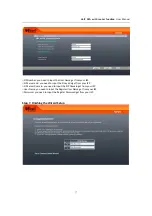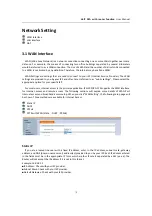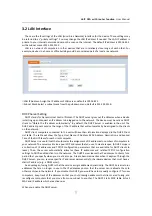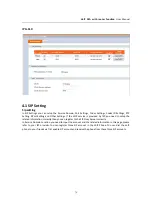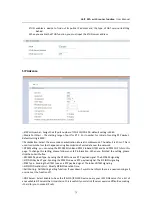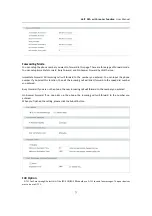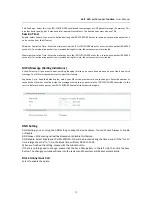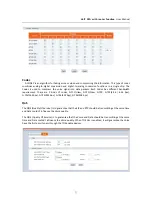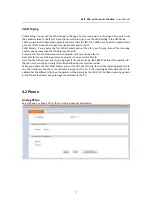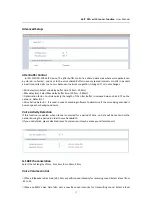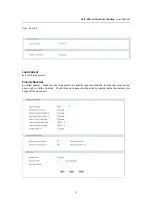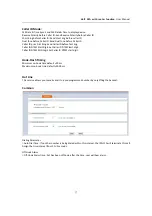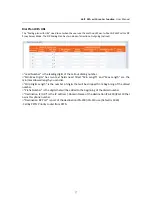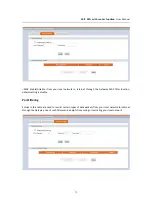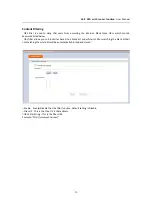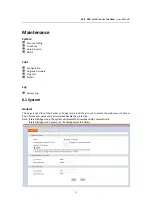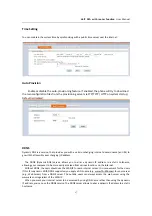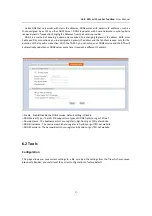
VoIP
ATA
with
router
function
User
Manual
28
STUN
enables
a
device
to
find
out
its
public
IP
address
and
the
type
of
NAT
service
its
sitting
behind.
When
you
enable
the
STUN
function,
you
must
input
the
STUN
server
address.
SIP
Advance
□
SIP
Port
Number
‐
Assign
the
SIP
port
number
of
IPG
‐
110/IPG
‐
200.,
default
setting
is
5060.
□
Media
Port
Start
‐
The
starting
range
of
port
for
RTP
.
Port
number
for
initial
of
sending
RTP
packet.,
default
setting
is
9000.
□
Packetization:
Select
the
voice
codec
packetization
interval
in
milliseconds.
The
default
is
20
ms.
This
is
used
to
minimize
loss
that
happens
during
transmission
of
voice
data
over
the
network.
□
DTMF
Setting
‐
you
can
setup
the
RFC2833
Out
‐
Band
DTMF,
Inband
DTMF
and
Send
DTMF
SIP
Info
in
this
page.
To
change
this
setting,
please
follow
your
ISP
information.
When
you
finished
the
setting,
please
click
the
Submit
button.
□
RFC2833
Payload
Type
‐
Sending
the
DTMF
tone
as
a
RTP
payload
signal.
The
RFC2833
signaling
□
SIP
INFO
Payload
Type
‐
Sending
the
DTMF
tone
as
a
RTP
payload
signal.
The
SIP
INFO
signaling
□
PCM
Type
‐
Sending
the
DTMF
tone
as
a
RTP
payload
signal.
The
Inband
DTMF
signaling
□
SIP
INFO
Duration
(ms)
‐
Modify
SIPINFO
duration
time.
□
Call
Waiting
‐
Call
Waiting
Setting
function:
If
user
doesn’t
want
to
be
inform
there
is
a
new
incoming
call,
user
can
set
the
function
off.
□
DNS
Server:
Select
Enable
to
have
the
IPG
‐
110/IPG
‐
200
Device
query
your
ISP’s
DNS
server
for
a
list
of
any
available
SIP
servers
that
it
maintains.
This
is
useful
if
your
static
SIP
server
exercise
difficulties,
making
it
hard
for
you
to
make
SIP
calls.




